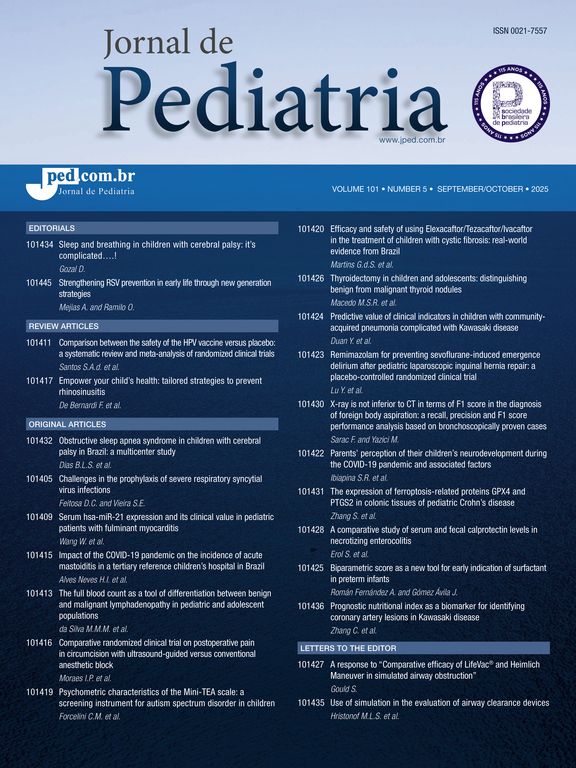300 hipertensive children, from newborn to 18 years old, were studied, retrospectively, from 1975 to 1992, 105 from those lost for follow-up. In 244 the diagnosis of the primary disease, predominantly glomerulopathy, was established. 122 had chronic renal failure (CRF). From them, 74 arrived at end stage renal disease (ESRD) and 13 have been transplanted. From 12 submitted to surgical treatment, hypertension has been controlled in 8. 54 died, 48 with CRF and 38 with ESRD. Difficulties in controlling those patients are discussed, mainly therapy diet, the use of hipotensive drugs on dialysis treatment. Our conclusion is for the necessity of a precocious diagnosis for hypertension and primary diseases, of a trained interprofessional team as well as availability of adequate equipment to children, mainly for dialytic therapy. For many of these children, renal transplantation is the only definite therapy.
The Impact Factor measures the average number of citations received in a particular year by papers published in the journal during the two preceding years.
© Clarivate Analytics, Journal Citation Reports 2025
SRJ is a prestige metric based on the idea that not all citations are the same. SJR uses a similar algorithm as the Google page rank; it provides a quantitative and qualitative measure of the journal's impact.
See moreSNIP measures contextual citation impact by wighting citations based on the total number of citations in a subject field.
See more







